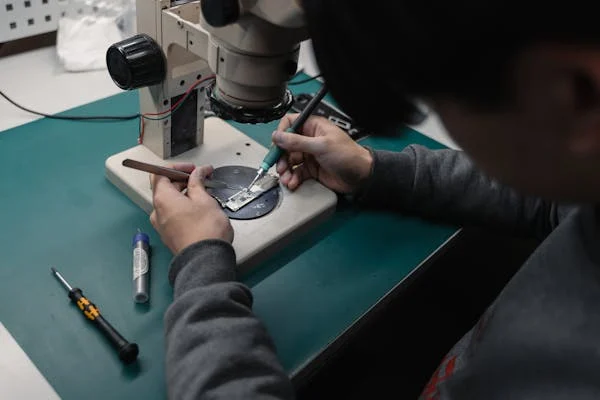
Mobile Fixing: A Comprehensive Guide to DIY Repairs
Mobile phones have become an integral part of our lives, and we rely on them for communication, entertainment, and even work. However, despite their importance, mobile phones are not immune to wear and tear, and they can malfunction or break at any time. When this happens, most people rush to repair shops, but did you know that you can fix your phone yourself? DIY phone repairs are becoming increasingly popular, and in this guide, we will show you how to fix common mobile phone problems.
Understanding the problem
The first step in fixing your phone is to understand the problem. Identify the symptoms, such as a cracked screen, battery drain, charging issues, or software glitches. Once you know what is wrong with your phone, you can search for solutions online. There are many forums and communities where users share their experiences and provide solutions to common problems. Also, check the manufacturer’s website for troubleshooting tips.
Tools you need
Before you start fixing your phone, you need to have the right tools. These include a screwdriver set, plastic opening tools, a spudger, a suction cup, adhesive strips, and tweezers. You can buy these tools online or at hardware stores. It’s important to have high-quality tools that will not damage your phone or cause injury.
Safety precautions
When repairing your phone, safety should be your top priority. Make sure to turn off the phone and disconnect the battery before you start. Wear protective gloves and glasses to avoid injury from sharp edges or broken glass. Work in a well-lit, clean, and organized area to avoid losing small components or creating further damage.
Common problems and solutions
Here are some of the most common mobile phone problems and how to fix them:
- a) Cracked screen: If your phone’s screen is cracked, you can replace it yourself by following these steps:
Remove the back cover and battery
Unscrew the screws holding the screen frame in place
Use a plastic opening tool to pry off the screen frame
Disconnect the screen cables from the motherboard
Remove the old screen and replace it with the new one
Reconnect the screen cables and reattach the screen frame and screws
Put back the battery and back cover
- b) Battery drain: If your phone’s battery drains quickly, you can try these solutions:
Turn off unused features such as Wi-Fi, Bluetooth, GPS, and mobile data
Reduce screen brightness and timeout
Uninstall unused apps
Use a battery-saving app
Replace the battery if it’s old or damaged
- c) Charging issues: If your phone is not charging, try these solutions:
Clean the charging port with a toothbrush or a soft cloth
Use a different charger or cable
Restart the phone
Check for software updates
Replace the battery or charging port if they are damaged
- d) Software glitches: If your phone has software issues, try these solutions:
Restart the phone
Clear cache and data of the problematic app
Update the app or the operating system
Perform a factory reset (back up your data first)
When to seek professional help
While DIY phone repairs are possible, there are some situations where you should seek professional help. These include:
Water damage: If your phone is submerged in water, do not turn it on or try to fix it yourself. Water can cause irreversible damage to the phone’s components, and attempting to turn it on can short-circuit the motherboard. Instead, take it to a professional repair shop or a manufacturer’s service center.
Physical damage: If your phone is severely damaged, such as a bent frame or broken motherboard, it’s best to take it to a professional repair shop. Attempting to fix these issues yourself can cause further damage and may even render the phone unusable.
Warranty coverage: If your phone is still under warranty, attempting to repair it yourself may void the warranty. In this case, it’s best to take it to the manufacturer’s service center or an authorized repair shop.
Lack of experience: If you are not familiar with phone repairs or do not have the necessary skills, it’s best to leave it to the professionals. Attempting to fix your phone without the right knowledge or tools can cause more harm than good.
Conclusion
In conclusion, mobile fixing is not as daunting as it may seem. With the right tools, knowledge, and safety precautions, you can fix common mobile phone problems yourself. However, it’s important to know your limitations and seek professional help when necessary. Remember to always prioritize safety and follow the manufacturer’s instructions when attempting to repair your phone. Happy fixing!
